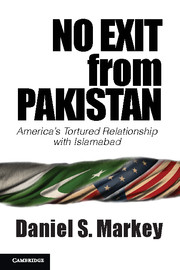5 - Great Expectations to Greater Frustrations
U.S.-Pakistan Relations after Musharraf
Published online by Cambridge University Press: 05 June 2014
Summary
In the mid-afternoon of January 27, 2011, a burly thirty-six-year-old Virginia native named Raymond Davis killed two Pakistanis. The shots from his pistol rang out on a busy street in the middle of Lahore, the capital of Pakistan's largest province. Accounts from Pakistani bystanders differ, but Davis may have pumped as many as five rounds into each of his victims. He then calmly stepped out of his car to take photos of the corpses with his cell phone camera. According to a Pakistani report, Davis got back into his car and attempted to escape, only to be arrested minutes later by Pakistani police officers at a traffic roundabout. When interrogated, Davis claimed that he acted in self-defense, and that the two men had approached him waving guns. For a man described by one of his former high school classmates as “friends with everyone, just a salt of the earth person,” Davis had ended up in an unusually tight spot.
The situation quickly went from bad to worse. Minutes after the shootings, a Toyota Land Cruiser sped to the scene. In its desperate effort to reach Davis in the crowded city, the unlicensed American vehicle drove up the wrong side of a busy street, slammed into an oncoming Pakistani motorcyclist, and left him dead. By that point, Davis was nowhere in sight, so the Land Cruiser raced to the U.S. consulate. In its haste, the vehicle somehow dumped an odd array of incriminating items: 100 bullets, a black mask, and a piece of cloth with an American flag. As an exasperated senior military officer at the U.S. embassy in Islamabad once told me, referring not to Davis but to the general state of affairs in the U.S.-Pakistan relationship, “You can't make this kind of shit up.”
- Type
- Chapter
- Information
- No Exit from PakistanAmerica's Tortured Relationship with Islamabad, pp. 136 - 168Publisher: Cambridge University PressPrint publication year: 2013



